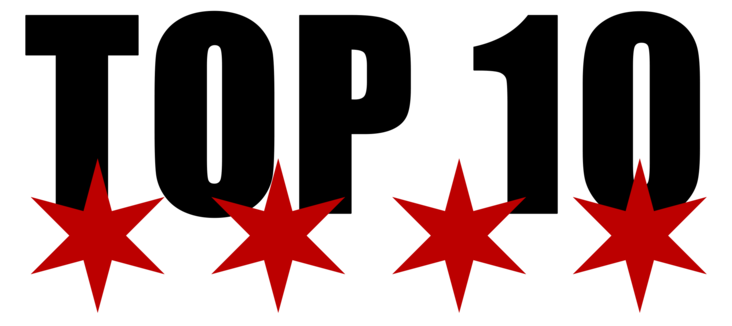During the Golden Knights’ game against the Dallas Stars at T-Mobile Arena on Feb. 26, head coach Gerard Gallant initiated a challenge for goaltender interference after Dallas center Radek Faksa made contact with Marc-Andre Fleury, which led to a goal for the Stars. Toronto reviewed the incident and upheld the goal because Jonathan Marchessault pushed Faksa into Flower. If you’re thinking to yourself, “man, goaltender interference goals never go Vegas’s way,” you may be right.
Goaltender interference is a major area of tension in the National Hockey League, because while the league has defined the rule, it’s application has been quite subjective, and similar situations have been called both ways. As far as the aforementioned scenario above? Just see below.
This clip clearly shows Radulov running into Fleury’s right elbow and blocker as he’s trying to make the save, which goes just wide of his blocker (as its being interfered with). This goal was reviewed and called a good goal. #VegasBorn pic.twitter.com/aTKWpH83lR
— Jesse Granger (@JesseGranger_) February 27, 2019
Goaltender interference is a major area of tension in the National Hockey League, because while the league has defined the rule, it’s application has been quite subjective, and similar situations have been called both ways.
The Official Rule
This rule is based on the premise that an attacking player’s position, whether inside or outside the crease, should not, by itself, determine whether a goal should be allowed or disallowed. In other words, goals scored while attacking players are standing in the crease may, in appropriate circumstances be allowed. Goals should be disallowed only if: (1) an attacking player, either by his positioning or by contact, impairs the goalkeeper’s ability to move freely within his crease or defend his goal; or (2) an attacking player initiates intentional or deliberate contact with a goalkeeper, inside or outside of his goal crease. Incidental contact with a goalkeeper will be permitted, and resulting goals allowed, when such contact is initiated outside of the goal crease, provided the attacking player has made a reasonable effort to avoid such contact. The rule will be enforced exclusively in accordance with the on-ice judgement of the Referee(s), but may be subject to a Coach’s Challenge (see Rule 78.7).
For purposes of this rule, “contact,” whether incidental or otherwise, shall mean any contact that is made between or among a goalkeeper and attacking player(s), whether by means of a stick or any part of the body.
The overriding rationale of this rule is that a goalkeeper should have the ability to move freely within his goal crease without being hindered by the actions of an attacking player. If an attacking player enters the goal crease and, by his actions, impairs the goalkeeper’s ability to defend his goal, and a goal is scored, the goal will be disallowed.
There are multiple subheads to the interference rule defining how to handle different situations and assess the proper call, but that’s the gist of it.
“Situation Room confirmed that the position of Radulov did not by itself impact Fleury’s ability to play his position in the crease and therefore no goaltender interference infractions occurred.” -NHL https://t.co/Hd0gN5xpve
— SinBin.vegas (@SinBinVegas) February 27, 2019
That is definitely goaltender interference on Radulov, who was behind Fleury in the crease, and certainly interferes with Fleury as he tries to make a save with his blocker.
But, this is the NHL so who the hell knows.
— Jesse Granger (@JesseGranger_) February 27, 2019
So far during the 2018-2019 season, the Vegas Golden Knights have either challenged or been challenged by an opponent for offsides, goaltender interference and a kicked-in-goal a total of 20 times in 18 games. Of those challenges, only eight of the decisions went in favor of the Golden Knights.
When it comes to interference, the Knight’s luck depends on who is challenging. Out of the six times Gallant has challenged the goal or no-goal call on ice due to interference, only one of the challenges overturned the call on ice in favor of the Knights — on Jan. 6 when the Knights played the Devils in New Jersey. A no-goal call due to interference was overturned, and Vegas won the game, 3-2. However, out of the four times other teams challenge for interference against the Knights, three out of the four calls were upheld by Toronto, including the March 3 shutout against Vancouver. The only time another team’s interference call went against the Knights was Feb. 2 against the Florida Panthers, where a no-goal call against Florida due to interference was overruled by Toronto, and the Panthers won, 3-1.
The Knights are luckier this season when it comes to offsides challenges. Gallant has challenged goals due to the other team being offside six times this season, and four of the goals were overturned in the Knight’s favor. However, the Knights are completely unlucky when it comes to offsides challenges against them — having none of the three offsides challenges have gone in their favor so far this season. You can bet when another coach challenges for offsides against the Knights, it was offsides.
The only other time the Knights have been challenged by an opposing team was on Jan. 12 at Chicago, where it appeared Pierre Edouard Bellemare scored against the Blackhawks, but the challenge determined the puck was kicked in.
Overall, the Golden Knights are significantly unlucky when it comes to challenges — the call goes in their favor 40 percent of the time. Vegas has a challenge success rate of 42 percent when they challenge, and a 38 percent success rate when the other team challenges. An offsides call is more likely to go their way than an interference call, but not by much.
Even though the Knights are on the low side of 50 percent of calls going their way, it hasn’t had that much of a negative impact on the outcome of the game. Out of the 18 games that challenges have been issued, the Knights have won 13, or 72 percent of the games. Two of the games had multiple challenges, and the Knights won both. In the seven games this season decided by only one goal, there have been 9 challenges (seven coming from the Knights), and they won five of those games.
Challenges, even when they don’t go in favor of the Knights, have a way of sparking them to overcome adversity and win the game. Also, it appears as if Gallant knows what he’s doing when he challenges a play. The effect of the call may not be on that play but in the overall game itself.












